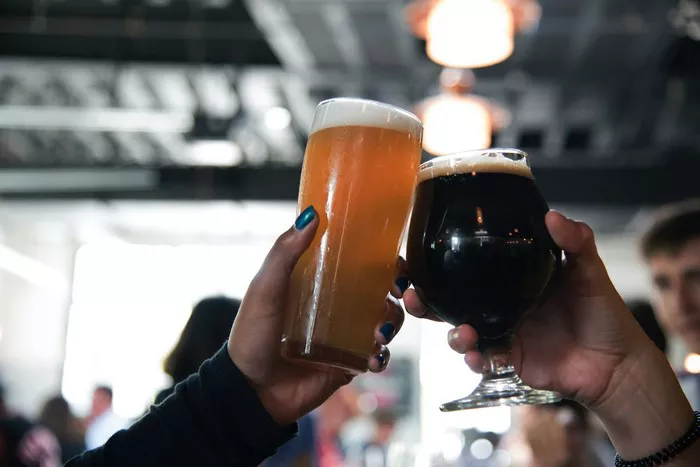For many, enjoying a cold beer is a quintessential way to unwind, celebrate, and socialize. As health-consciousness continues to shape dietary choices, understanding the caloric content of various beverages has become an essential aspect of mindful consumption. But how many calories are in a single beer? In this comprehensive guide, we delve into the world of beer and unveil the factors that influence its caloric content, helping you make informed choices without sacrificing the pleasures of a well-deserved pint.
The Caloric Conundrum: Demystifying Beer Calories
The caloric content of beer is influenced by multiple factors, including the type of beer, its alcohol content, and the brewing process. Understanding these factors can shed light on why calorie counts vary among different beers.
Types of Beer and Caloric Variations
Beer comes in an array of styles, each with distinct flavor profiles, aromas, and ingredients. This diversity contributes to the variations in caloric content.
Light Beers: Lower Caloric Impact
Light beers are renowned for their lower caloric content. These beers are brewed to have fewer carbohydrates and calories than their full-strength counterparts. Light beers often appeal to those who prioritize a lower calorie intake while still enjoying the social aspects of beer consumption. On average, a 12-ounce (355 ml) can or bottle of light beer contains approximately 90 to 100 calories.
Regular and Craft Beers: A Range of Calories
Regular and craft beers, which encompass a wide range of styles and flavors, tend to have a higher caloric content than light beers. A typical 12-ounce (355 ml) serving of these beers can range from 150 to 250 calories. The variations in calories are influenced by factors such as the beer’s malt and hop content, alcohol by volume (ABV), and additional ingredients used in the brewing process.
High-Alcohol and Specialty Beers: Elevated Calories
High-alcohol beers and specialty brews, including imperial stouts and barleywines, often pack a more significant caloric punch due to their elevated alcohol content and dense flavor profiles. These beers can contain anywhere from 250 to 450 calories or more per 12-ounce serving.
Factors That Influence Beer Calories
Several factors contribute to the caloric content of a beer, beyond its style or alcohol content.
1. Alcohol by Volume (ABV)
The alcohol by volume (ABV) of a beer—the percentage of alcohol it contains—plays a significant role in its caloric content. Alcohol contributes calories to the beverage, so higher ABV beers generally have more calories. This is why high-alcohol beers, such as barleywines and imperial stouts, often have a higher calorie count compared to lighter options.
2. Malt and Sugar Content
The type and amount of malt used in brewing impact the beer’s caloric content. Malted grains provide fermentable sugars, which are converted into alcohol during the fermentation process. More sugars result in a higher-calorie beer.
3. Additional Ingredients
The inclusion of additional ingredients, such as fruits, spices, and flavorings, can also influence a beer’s caloric content. These ingredients contribute both flavor and calories to the final product.
4. Residual Carbohydrates
Carbohydrates are present in beer as a result of the fermentation process. Yeast consumes sugars in the wort (the liquid extracted from malted grains) and converts them into alcohol and carbon dioxide. Any residual carbohydrates that remain contribute to the beer’s caloric content.
5. Serving Size
The serving size of a beer directly affects the total calorie count. A standard serving of beer in the United States is typically 12 ounces (355 ml). However, larger serving sizes, such as pints or 22-ounce bottles, will contain more calories.
Calculating Beer Calories: A General Approach
While the specific caloric content of a beer can vary, a general approach to calculating calories involves considering the following:
Alcohol Content: Alcohol contributes about 7 calories per gram. To estimate the calories from alcohol, multiply the beer’s ABV by its volume (in milliliters) and then by 7.
Carbohydrate Content: Carbohydrates contribute about 4 calories per gram. To estimate the calories from carbohydrates, multiply the beer’s carbohydrate content (in grams) by 4.
Protein Content: Protein contributes about 4 calories per gram. While beer is not a significant source of protein, if it contains protein-rich ingredients like grains, you can factor in the protein content as well.
Total Calories: Sum the estimated calories from alcohol, carbohydrates, and protein to get the approximate total calories per serving.
Mindful Consumption and Enjoyment
Understanding the caloric content of a single beer empowers you to make mindful choices that align with your dietary goals. However, it’s essential to strike a balance between awareness and enjoyment.
1. Moderation
As with any alcoholic beverage, moderation is key. Excessive alcohol consumption can lead to various health risks, regardless of the beer’s caloric content. Enjoying beer responsibly can help you savor its flavors while maintaining a balanced lifestyle.
2. Occasional Treat
Treating yourself to your favorite beer occasionally is part of a healthy approach to consumption. If you’re concerned about calories, consider balancing your intake with other dietary choices throughout the day.
3. Experimentation
Explore different beer styles to discover those that align with your preferences and dietary goals. Lighter options and beers with lower ABV might become your go-to choices when aiming to minimize caloric intake.
4. Read Labels
Some beer labels provide nutritional information, including calorie counts, helping you make informed decisions. Checking labels can provide a clear understanding of what you’re consuming.
In Conclusion
The caloric content of a single beer varies based on factors such as its style, ABV, malt content, and serving size. Light beers generally contain fewer calories, while regular, craft, and high-alcohol beers can have a higher caloric impact. Understanding the relationship between these factors empowers you to enjoy beer mindfully while aligning with your health and dietary goals. Whether you’re raising a glass to relaxation or celebrating with friends, sipping beer with awareness allows you to appreciate both its flavor and its role in your well-balanced lifestyle.


